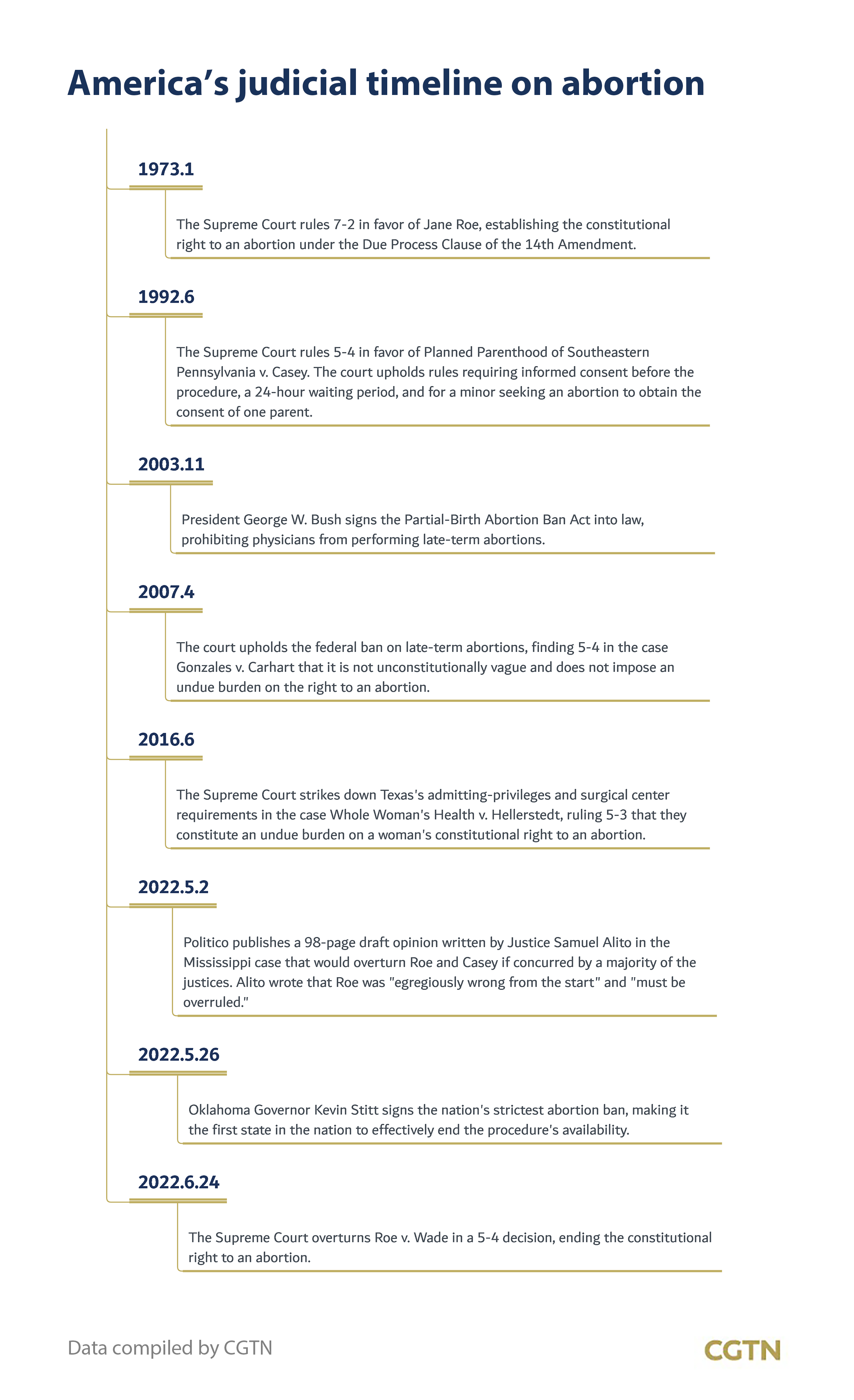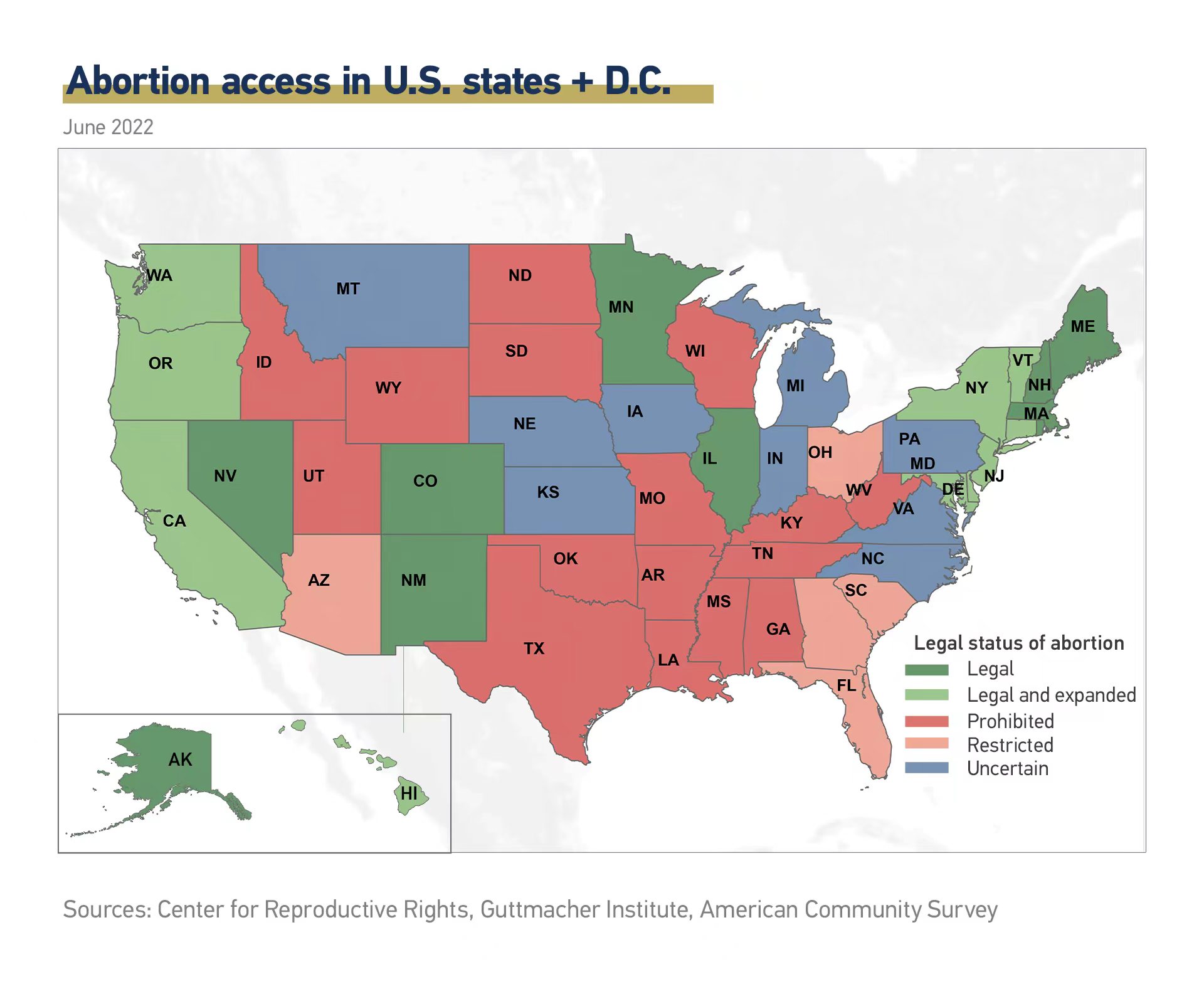The overturn of the Roe v. Wade decision is a historic and far-reaching decision that will dramatically change the lives of millions of women in the U.S. and exacerbate growing tensions in this deeply divided country.
What is Roe v. Wade?
In 1973, Norma McCorvey, known by her legal pseudonym Jane Roe, filed a lawsuit against the local district attorney, Henry Wade. The lawsuit claimed that Texas' abortion law was unconstitutional. The court ruled 7-2 in favor of Roe and formed the beginning of the constitutional protection of abortion rights.
Roe v. Wade is one of the few constitutional decisions most Americans know by name. It recognizes that the right to personal privacy under the U.S. Constitution protects a woman's ability to terminate her pregnancy.

A draft opinion written by Justice Samuel Alito published on Politico in May struck down Roe v. Wade decisions on abortion rights, saying that Roe was "egregiously wrong from the start" and "must be overruled." Alito mentioned in the draft that, "Its reasoning was exceptionally weak, and the decision has had damaging consequences. And far from bringing about a national settlement of the abortion issue, Roe have enflamed debate and deepened division."
The Supreme Court declared that the constitutional right to abortion no longer existed on June 24, and individual states will now determine the right to abortion.
Changes after the decision of Roe v. Wade in the U.S.
In the decade after the Roe v. Wade decision, there was a noticeable upward trend in the rate of women aged 15 to 44 who chose to have abortions in the U.S., but the enforcement of the abortion constitution did not sustain the increase. After 1983, the rate of women who decided to have abortions continued to decline and reached a new low of 13.5 abortions per 1,000 women in 2017.

In the first five years of the implementation of the Roe v. Wade decision, the number of abortion-related deaths in the U.S. was up to 149, of which 35 deaths were due to illegal abortions. As abortion became gradually more legal in different states, there was a dramatic improvement in the accessibility of safe and professional abortion services. From 2013 to 2017, the number of women who died from abortion decreased to 23, with the number of illegal abortion death reduced to one.
What is happening? What will happen next?
With the elimination of the constitutional right to abortion, abortion rights will now be determined by the states. According to the New York Times' real-time monitoring of the changes to abortion rights in each state in the U.S., the current status of abortion rights in individual states can be classified as prohibited, restricted, uncertain, and legal: prohibited states, such as Alabama and Missouri, where abortion will be completely banned except under medical emergencies; restricted states, such as Ohio and Florida, where abortion will be banned after six weeks of pregnancy; legal states, such as California and New York, where abortion will remain legal; and a few other states, such as Iowa and Michigan, where the attitude towards abortion rights is still an uncertainty. So far, almost half of the states in the U.S. have imposed strict restrictions and bans on abortion rights.

In an abortion-focused poll conducted by Pew Research Center before Roe v. Wade was overturned, 71 percent of adults expressed varying degrees of agreement on "the decision about whether to have an abortion should belong solely to the pregnant woman." Over three-quarters of adults agreed in varying degrees that: "If legal abortions are too hard to get, then women will seek out unsafe abortions from unlicensed providers."
According to statistics released by the Guttmacher Institute in 2017, in the states with more restrictive abortions, such as Missouri and Kentucky, the number of abortion clinics was lower; and the percentage of women aged 15 to 44 living in a county without a clinic was higher. The opposite situation was found in the states with fewer abortion restrictions, such as New York and California.
While many states still retain abortion rights, "the impact would be absolutely enormous," said Caitlin Myers, an economics professor at Middlebury College. "For those who were denied an abortion and gave birth, the result was years of financial hardship," she said, according to recent evidence from the Turnaway Study, which tracked nearly 1,000 women seeking an abortion at 30 clinics across the U.S. from 2008 to 2010.
"This is a big setback for women's rights, both from a health and an economic standpoint," said Carolyn McClanahan, a certified financial planner, physician, and founder of Life Planning Partners.

